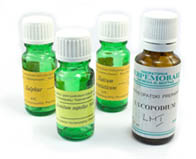Homeopathic Treatment
 Homeopathy
is a therapeutic system that seeks to restore the body’s harmony. It stimulates
the body’s innate forces of recovery and triggers it to heal itself. Homeopathy
is a therapeutic system that seeks to restore the body’s harmony. It stimulates
the body’s innate forces of recovery and triggers it to heal itself.
The term is taken from Greek words — homoios meaning “like” and patheia meaning “disease” or “suffering”, and the system works on the principle that “like heals like.” Essentially, what this means is that a substance which, when given to health individuals, produces particular symptoms may be given to help the recovery of a patient whose illness is displaying similar symptoms to those seen in healthy people. For example, we all know that stinging nettles produce itchy, burning skin. Interestingly, someone who is sick and whose illness present itchy, blistering skin may be given homeopathically prepared Urtica urens (a decoction made from stinging nettles) as a remedy.
Correct homeopathic treatment has regard for the whole person and his or her way of life. The assumption is that the body can fight the sickness, so the treatment aims to help stimulate the body to do its natural job. Different treatments are selected for different people, even though they may be suffering from the same disease.
It can be demonstrated in the laboratory that while a large dose of poison kills, a minute dose of the same poison can stimulate the cellular function vital to produce a natural antidote.
Although the principle of curing “like with like” was recognized
by Hippocrates back in the fifth century, the origins of the modern system
go back to Dr. Samuel Hahnemann, a German physician who lived and worked
in the eighteenth century. He discovered that when he took cinchona bark
it produced malaria-type symptoms, which he found curious since cinchona
(later known as quinine) was the very drug given to treat malaria.
|